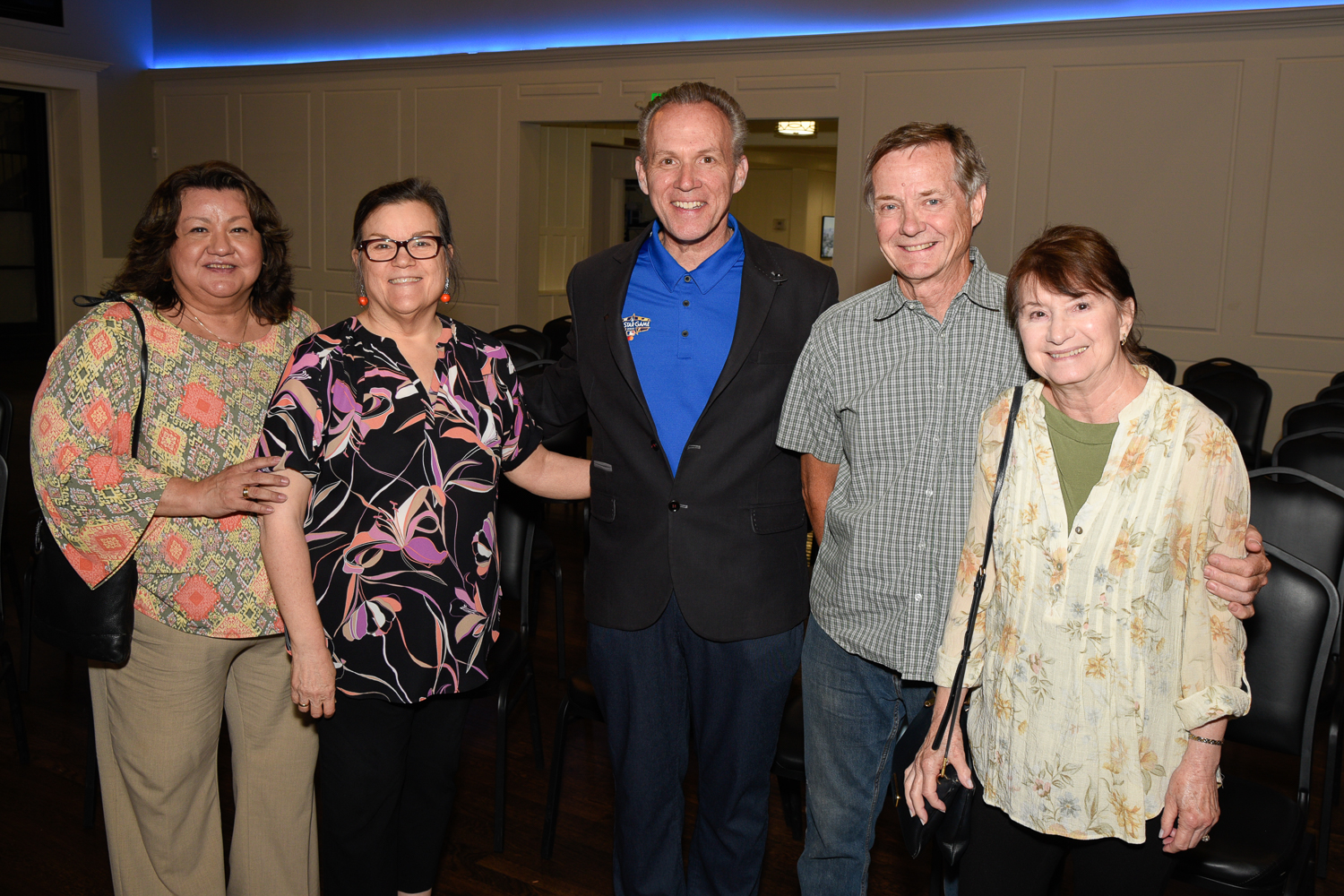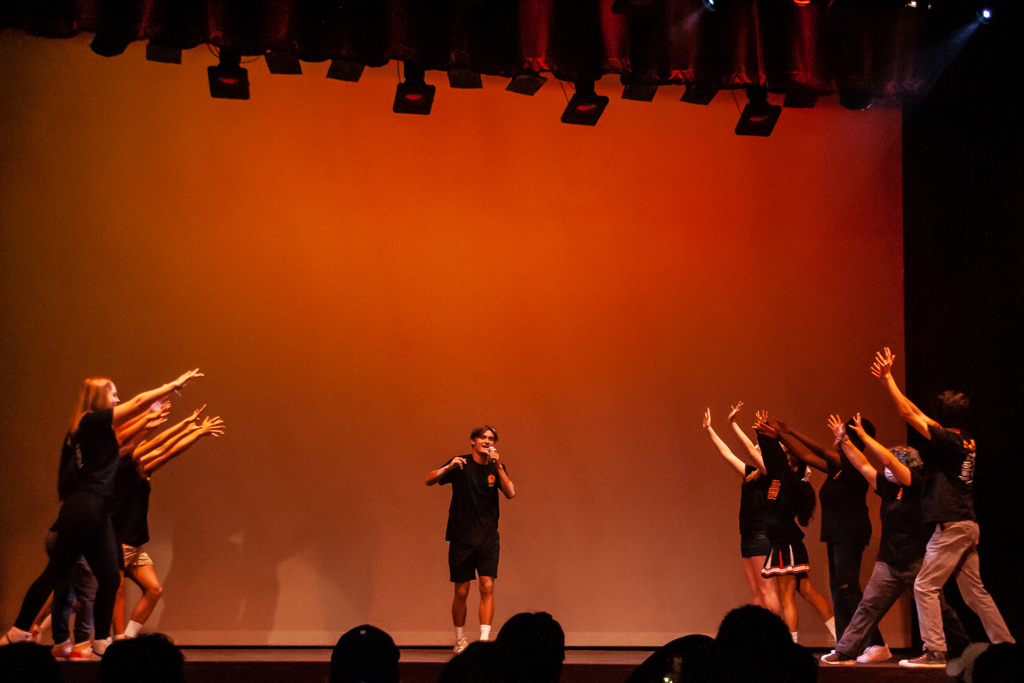Story by Benjamin Regan
Sports Editor
Photo Courtesy of James Staub
Pasadena Museum of History
Of all the positions that make up a professional baseball club, team historian is one that most people overlook. For Mark Langill, however, it is his life.
Los Angeles Dodger historian and South Pasadena High School alumnus Mark Langill was the featured speaker at an event hosted by the Pasadena Historical Society at The University Club in Pasadena on Thursday Aug. 4. The event was hosted by the Pasadena Historical Society. Langill graduated from SPHS in 1983, gaining writing experience on the Tiger Newspaper. Langill was the first person to earn the title of team historian in professional sports, and has worked with the Dodgers since 1994. As the publications editor for the team, Langill has written six books on the Dodgers, encompassing over 60 years of team history.
“The South Pasadena High School and the Tiger Newspaper actually started my career,” Langill said. “Everything started one day in my sophomore year. I was sitting in English class and someone arrived from the Tiger [Newspaper] with an invitation to be on the staff. I had not applied to be on the Tiger [Newspaper], so it surprised me, and it turned out that my English teacher Jack Dalton had nominated me.”
Langill’s passion in sports media coverage began at SPHS, where he combined his love for Dodger baseball with a local writing platform.
“I guess he saw I had brought the sports page to class everyday and sometimes I would have a sweatshirt in the afternoon resting on my head,” Langill said. “I had the transistor radio in there because the Dodgers were probably playing a day playoff game.”
As team historian, Langill’s primary focus is bringing fans closer to the game by connecting them with Dodger history. Langill works to organize anniversaries and document former players, among other responsibilities. His speech at The University Club took fans on a 138-year journey of Dodger baseball, starting with the team’s origins in Brooklyn, all the way up to the July 2022 All-Star break at Dodger Stadium.
Langill’s presentation came on the heels of broadcaster Vin Scully’s passing, just two nights prior, so Langill began by talking about the famed voice of the Dodgers. This was appropriate given Scully called 67 years of team history; every strikeout, every home run, every joyous win and crushing defeat. Langill, like every fan, had his story about Vin Scully and his own personal connection. He recalled when he met with the Dodgers announcer on his retirement tour in 2016, where Langill showed with a New York Giants cap, the team Scully grew up rooting for in Brooklyn. Eight-year old Vin Scully followed the team by reading the local black-and-white newspaper and listening to the games, so when Langill showed him the bright blue Giants cap, he was astonished at the color. There was little Scully didn’t know about baseball, but the color of his childhood team was one of them.
“People say don’t meet your idol because you could be disappointed. And it couldn’t be further from the truth with Vinny because the person that you saw on your television or the night voice that you heard on the radio, he was an even better person,” Langill said. “Meeting him…I learned the importance of preparation, hard work, how to treat other people, it was just amazing and such a privilege.”
Langill talked about the early years, where the Brooklyn Dodgers called Ebbets Field home from 1912 to 1957. Langill described at the time Dodger Vice President Walter O’Malley’s concerns over Ebbets Field’s capacity, seating just over 30,000 fans. While the New York Yankees drew nearly 70,000 people to games, the Brooklyn Dodgers, appearing in five World Series in the 1950s, were falling behind. Langill said that Ebbets Field was bounded by its location, right in the middle of a Brooklyn neighborhood. Looking to expand but lacking the space to do so, talks of moving to Los Angeles brewed in 1957 and O’Malley officially took the team to the City of Angels in 1958.
Langill’s presentation was aided by a slideshow, where he showed attendees the Dodgers new stadium, the Los Angeles Coliseum. Having hosted the Olympics in 1932, the Coliseum was primarily used for track and field events and football games before the Dodgers began playing there in 1958. Pictures showed the lopsided field, which treated left-handed hitters to an extraordinarily deep right field, and outfielders to cover a tremendous amount of ground. The L.A. Coliseum was only temporary, as O’Malley looked to find the Dodgers a new home.
“First of all, they went from a 31,000 seat neighborhood ballpark at Ebbets Field with room for 300 automobiles to suddenly at the Coliseum that could hold crowds of more than 90,000,” Langill said. “That was the biggest difference between the Brooklyn Dodgers and the Los Angeles Dodgers. There was also the type of crowd, because they moved to Southern California as a very famous team, and so Hollywood stars would come out to the games.”
O’Malley selected Chavez Ravine as Dodger Stadium’s location, where it was built over the next few years. The stadium was ready for action on opening day, 1962, where the Reds beat the Dodgers 6-3. The game was called by Vin Scully.
As the Dodgers would carry over their success in Brooklyn to Los Angeles, winning their first championship in L.A. over the Yankees in 1963, Langill went on to talk about other events the multi-use Dodger stadium hosted. The Beatles played in 1966, and the Dodgers retired Jackie Robinson’s number in 1971. The Pope visited Dodger Stadium in 1987. In 2017, the World Baseball Classic, a worldwide baseball tournament, came to Dodger Stadium.
Langill had no shortage of Dodger anecdotes, describing the accidental invention of the Dodger Dog when an employee was asked to generate a name for the hot dog on the spot. Langill also provided a fair share of iconic photos, including part owners Billie Jean King and Magic Johnson together and Rachel Robinson, Jackie Robinson’s widow, with Scully at Dodger Stadium.
With a seemingly limitless memory, Langill captured some of the greatest moments in Dodger history and the events that shape the team today. The South Pasadena native went on to answer questions, always prepared with a Dodger story or memory in response. Langill will continue to cover the Dodgers as team historian as they look to make more history this season.



